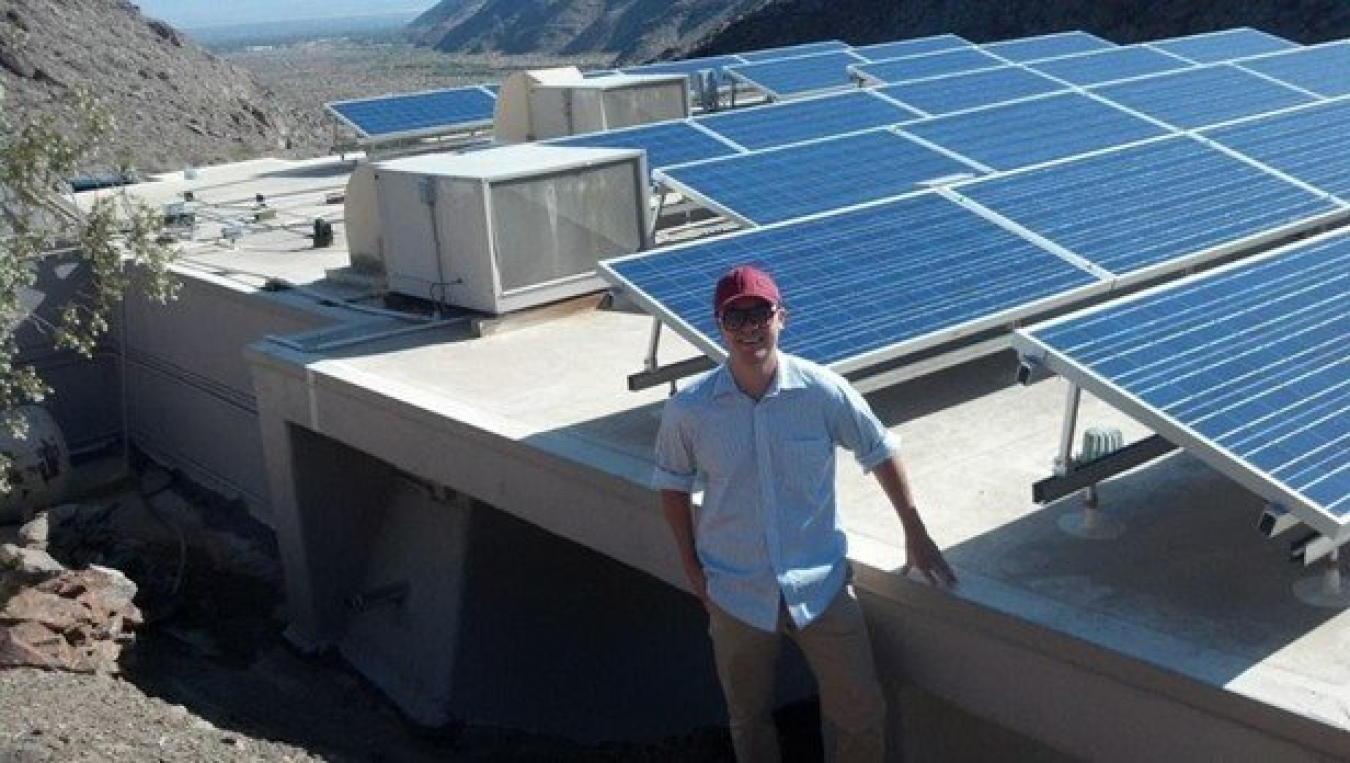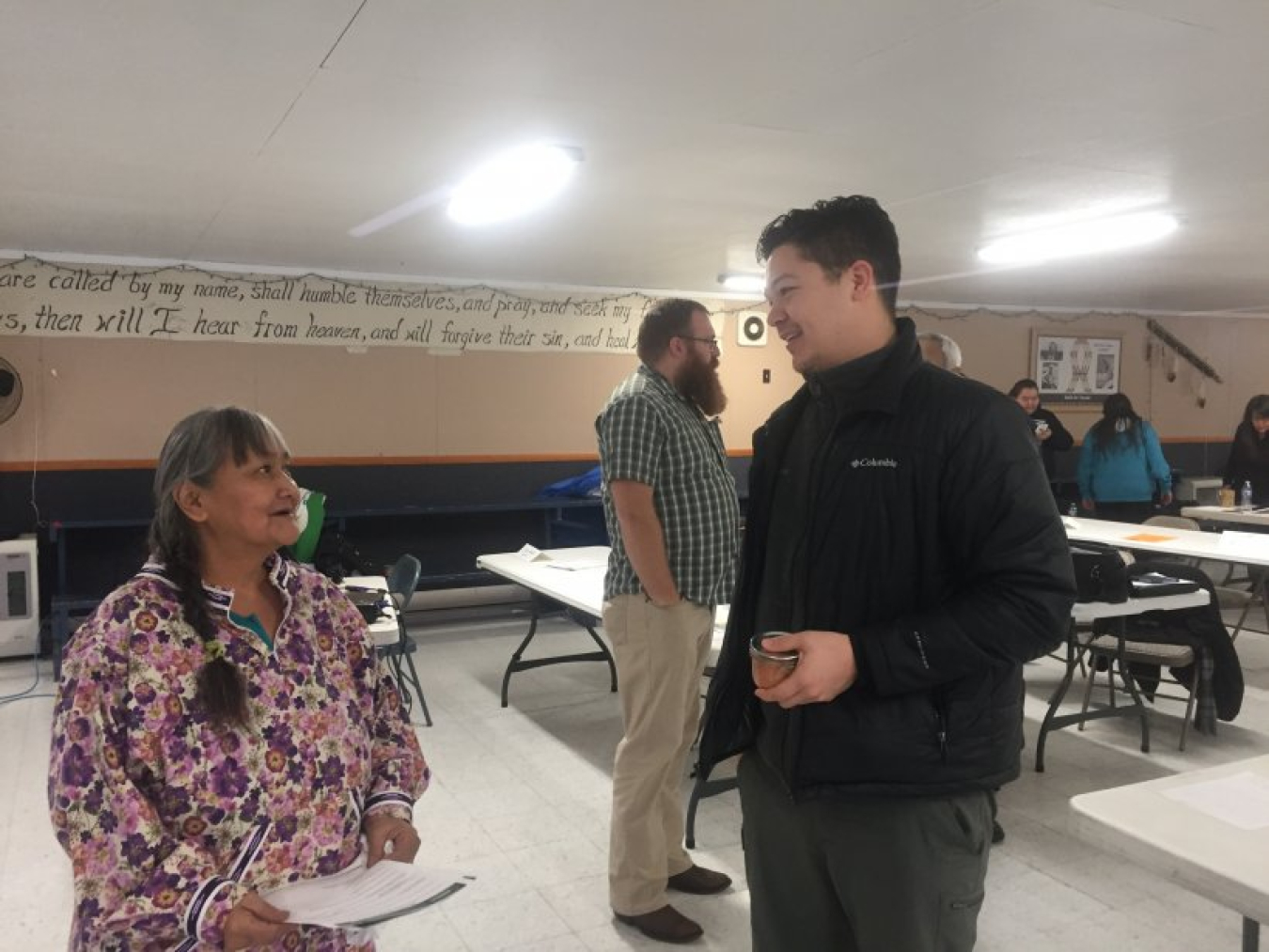Name: Tommy Jones; Institution: University of Arizona; Program: Office of Indian Energy Student Internship; Education Level: Graduate Student
January 17, 2018My name is Dr. Tommy Jones. I am from Jones, Oklahoma, and I am a citizen of the Cherokee Nation of Oklahoma, Naknek Village Council, and a Native shareholder of Bristol Bay Native Corporation. In 2014, I first applied to the U.S. Department of Energy (DOE) Office of Indian Energy student internship located at Sandia National Laboratories. The transformative experience solidified my desire to work in this field and to contribute to the fast-growing industry of energy development in Indian Country.

Dr. Tommy Jones on a site visit to the Agua Caliente Solar Plant during his internship.
During my time as an intern (see my previous blog), my colleague Dr. Len Necefer and I collaborated on a research paper titled Identifying Barriers and Pathways for Success for Renewable Energy Development on American Indian Lands. The goal of the research was to hear from tribal, federal, private, and academic experts who are specifically working in tribal energy. The work was meant to help identify the barriers of bringing the significant renewable energy potential that exists in Indian Country to market for the benefit of tribal communities. Hearing from those who not only work directly on energy issues but rely firsthand on the dependability of energy systems far exceeded my expectations. This type of internship, where students have the opportunity to engage directly with leaders in their field, is exceptional. We weren’t sitting in an office making assumptions about communities across the nation; we were visiting these communities and hearing their stories. The stories we heard about these communities’ struggles, and more importantly their perseverance to meet their energy needs and promote economic development, was life changing. No longer are you simply a student or a researcher. Now, you are involved in the process to help Native Americans meet their energy visions, which benefits those communities, enhances your personal growth, and contributes to the energy independence of the United States of America.
This type of internship, where students have the opportunity to engage directly with leaders in their field, is exceptional. We weren’t sitting in an office making assumptions about communities across the nation; we were visiting these communities and hearing their stories.
The work I did as an intern translated seamlessly into the Ph.D. program at the University of Arizona that I was working towards. I was able to use the experiences and specifically the research work conducted during my internship to greatly improve my understanding of these topic areas and to complete the requirements for my degree. As a student, I quickly saw myself becoming an expert in my own right due in large part to my experiences and research during the Indian Energy internship.
During my time as an intern I was also given the unique opportunity to work in the Washington, D.C., headquarters office of the Office of Indian Energy. This experience allowed me to analyze the grassroots research I had been working on within the context of broader society and government functions. I was able to see current and future leadership in action and gain a better understanding of how the work I was doing ties into a bigger picture. These type of life experiences shaped who I am as a contributing member to society. The work we do to invest in ourselves is effectually investing in all of Indian Country, and the United States in general. The positive contributions we make benefit all of us, and I’m counting on more Native students to follow suit.
My DOE internship directly prepared me for my current role as a contractor to the Office of Indian Energy. My internship helped me to know the issues, to know the mission of the Office, and to know how valuable the work the Office does is to Indian Country. During our first week on the job, my colleague Dr. Necefer and I were asked to research the impacts of the grants the Office administered from 2010 to 2016. Having a clear picture of the dollars that DOE and tribes have invested in energy development has provided great insight into what the Office has helped accomplish. To date, over 20 megawatts of energy generation capacity has been funded, with energy cost savings of over half a billion dollars for the life of those projects. These installations, along with the tremendous energy efficiency measures installed, will make real financial and energy reliability impacts in these communities. The results of this research have been used for DOE websites and informational materials as well to inform National Congress of American Indians (NCAI), Congressional, and White House requests.

My DOE internship directly prepared me for my current role as a contractor to the Office of Indian Energy. My internship helped me to know the issues, to know the mission of the Office, and to know how valuable the work the Office does is to Indian Country. During our first week on the job, my colleague Dr. Necefer and I were asked to research the impacts of the grants the Office administered from 2010 to 2016. Having a clear picture of the dollars that DOE and tribes have invested in energy development has provided great insight into what the Office has helped accomplish. To date, over 20 megawatts of energy generation capacity has been funded, with energy cost savings of over half a billion dollars for the life of those projects. These installations, along with the tremendous energy efficiency measures installed, will make real financial and energy reliability impacts in these communities. The results of this research have been used for DOE websites and informational materials as well to inform National Congress of American Indians (NCAI), Congressional, and White House requests.

